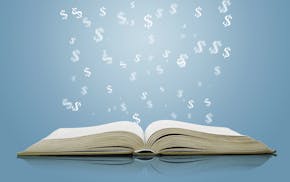You need money to pay the babysitter, or to eat at that hole-in-the-wall restaurant that doesn't take plastic. But your bank's cash machine's nowhere in sight. Withdrawing money will cost you. How much?
It depends, but prepare to spend more than $3 to withdraw cash from a bank that's not your own, according to a Bankrate.com study conducted last fall.
Nationwide, the average is $3.74. In Minnesota, the average is 20 cents lower, or $3.54, as area banks tend to charge non-customers less to use their ATMs.
That figure is made up of two fees -- the fee your bank charges you for going out-of-network and the fee the bank that owns the ATM charges non-customers. The majority of financial institutions charge both types.
These fees, often known as surcharges, have been rising for the past decade, and experts expect that trend to continue.
"Regulatory changes in the industry have really put a damper on banks' ability to make money on fees," Ron Shevlin, a retail banking analyst at Boston-based research firm Aite Group, said.
In recent years, new regulation has limited the fees banks charge on credit cards and debit card overdrafts. These days, financial institutions and retailers are sparring over how much banks can earn when a debit card is used at the register. The current Federal Reserve proposal is to cap these so-called "swipe fees" at 12 cents per transaction, well below the average 44 cents currently earned by banks.
Why would that affect ATM fees?
"If you press down on one side of the balloon, it's going to pop up on the other. When you press down on overdraft fees and interchange revenue, banks are going to raise [other] fees," Shevlin said.
In this economy, consumers are very focused on saving a buck here and there. And they may be upset to hear that ATM fees, which many already think are exorbitant, will continue to head north.
But instead of moaning about costs, take control. There are several ways to easily avoid ATM fees:
Plan ahead. "Saturday night comes at the same time every week," said Greg McBride, senior financial analyst for Bankrate.com. Schedule a set time to get money out of your bank's ATM each week. This helps with budgeting too, if you vow not to take out any more cash until your next ATM appointment.
Or while you're in line at the store, think about whether you'll need money anytime soon, and opt for cash back with your PIN-based debit card transaction, if the store allows it.
Scout out locations ahead of time. Check your bank's website or download a mobile app that locates ATMs.
Explore your alliances. Many financial institutions are part of a surcharge-free alliance that allows customers to take out money free of charge at partner ATMs. Some examples include: The MoneyPass network, owned by U.S. Bank and used by both banks and credit unions. It has more than 20,000 locations, including in some retail stores. The Co-Op Network, with more than 28,000 machines in its network, is used by many credit unions. In Balance, a smaller network that is mostly concentrated in Minnesota, is owned by the Independent Community Bankers of Minnesota.
Consider a financial institution that reimburses part, or all of your ATM fee. One in four banks don't charge customers for using another bank's cash machine. Some banks reimburse you for the first few ATM fees and then charge you after that.
Online banks are known for generous reimbursement policies. For example, State Farm Bank reimburses all ATM fees for customers who make a direct deposit into a checking or money market account each month. Charles Schwab Bank reimburses all ATM fees. USAA offers fee-free withdrawals for the first 10 transactions per month and pays back up to $15 in other banks' ATM usage fees monthly. These banks can afford these generous reimbursements because they don't have bricks-and-mortar locations on every corner.
Ask your bank for ideas. You want flexibility without a price. But your bank doesn't belong to a surcharge-free network or reimburse fees. Before you take your money somewhere else, ask your financial institution if there's something you're missing. Maybe it offers an account with ATM reimbursement as a perk, for example, although many require higher daily balances.
When you do have to use an ATM that's not affiliated with your bank, try to avoid the ones in bars and convenience stores, which are often owned by cash machine companies, not financial institution, and tend to charge more.
Don't beat yourself up over a fee here or a fee there.
"The occasional $3 or $4 fee isn't going to put you in the poor house. What will is the habit of constantly going to another bank's ATM," McBride said.
Kara McGuire • 612-673-7293 or kmcguire@startribune.com. Twitter: @kablog.


